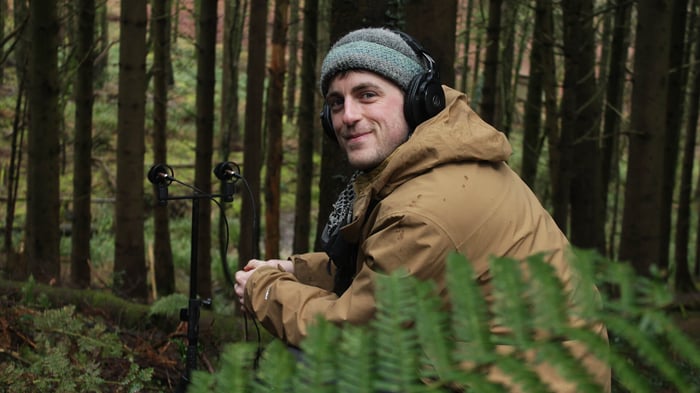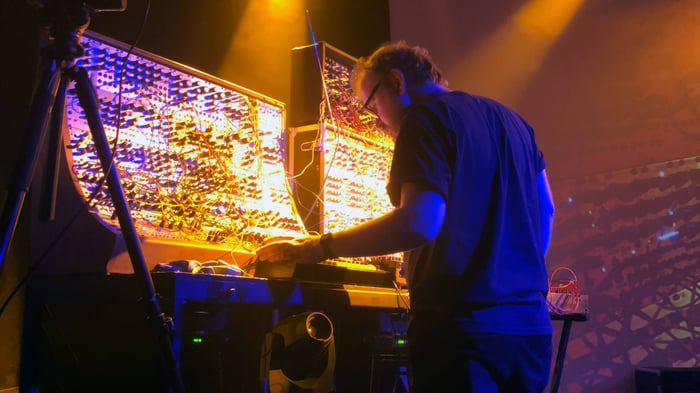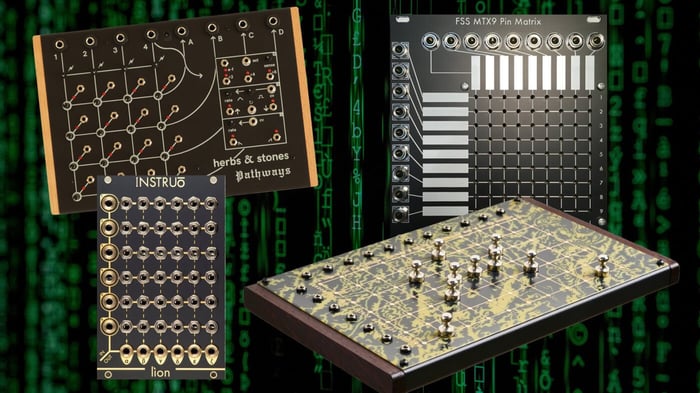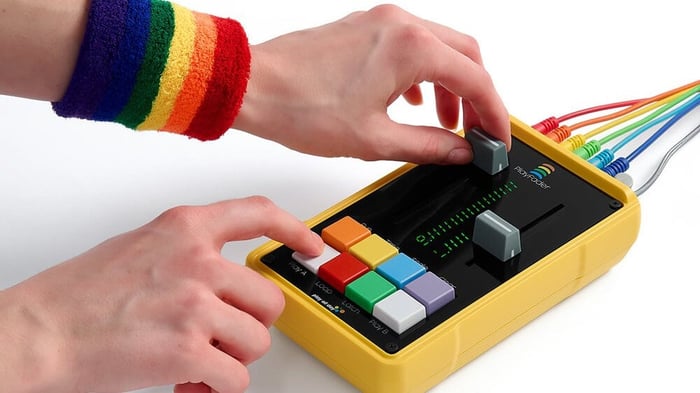
Made to Fade: a chat about the PlayFader with Andrew ‘Hadj’ Hadjiantoni
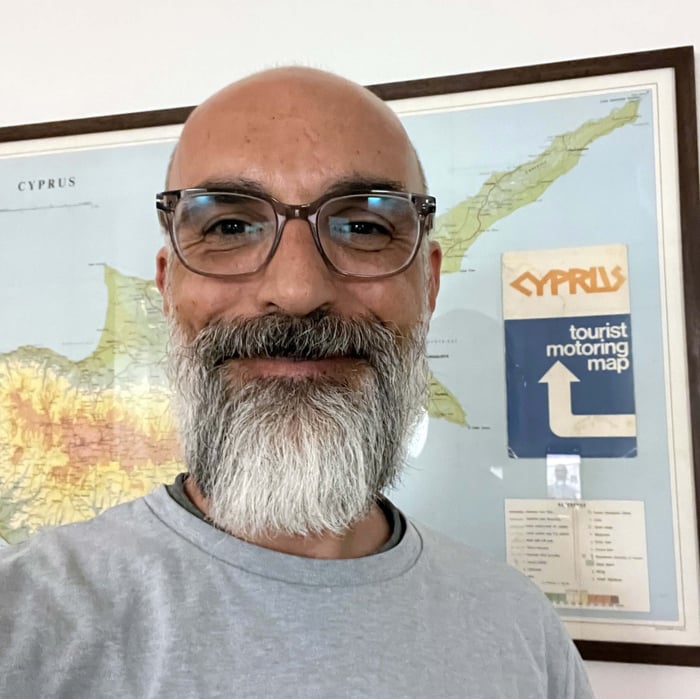
One of the more interesting hardware sequencers to emerge last year was the PlayFader, a striking two-channel performance sequencer from Play All Day. Born out of a desire to create a hands-on approach to sequencing that’s accessible to those without formal musical training, it’s the brainchild of Andrew ‘Hadj’ Hadjiantoni (pictured) and Jason Hotchkiss of Sixty Four Pixels. We caught up with Hadj to find out what makes him and the PlayFader tick.
Raised in Cyprus, Hadj moved to North Wales and completed a degree in religious studies before doing a Masters in Music Technology and Sound Design, which set him firmly on the electronic music path. After setting up a recording studio in Wales and DJing, producing music and running events for most of his twenties, he ended up working for Apple and enjoying a successful corporate career while based on the South Coast. It was here that he set up the Brighton Modular Sessions and teamed up with Jason Hotchkiss to develop the idea that would become the PlayFader.
Hadj says: “My DJ background brought me to the point of wanting to interface and interact with sequences in a more fluid way. I'm not a keyboard player, so I wanted something that was as performable as a mixer. The first idea I took to Jason was a Euclidean Eurorack module that used arcade buttons, because I enjoyed using old DJ mixers with transform buttons on either side of the crossfader. It was kind of derived a little bit from that, and then as we got into what it might look like, I started thinking, ‘What if it had a fader?’
“The problem was that in a Eurorack module, fader length was going to be restricted. So I started rethinking the design: what if we created a product with faders that had a good throw, felt good and had this very playable approach to using a single button to create a gate and the fader to create CV?”
One of the distinctive features of the PlayFader is its two-piece design, where the protective lid can sit underneath the unit to act as a stand. Hadj explains: “The thing that annoys me about Decksaver covers is they're great, but when you're not using them as covers, they’re redundant pieces of plastic. And at the same time, you've got loads of people making stands for gear that tilts it or does something with it. And I thought, ‘Why can’t the two be the same thing?’”
The years Hadj spent at Apple fed into the design approach, but not necessarily in the most obvious way. He says: “Working at Apple helped influence some of the design, but more in the sense that I have a better idea of what's truly necessary and kind of what isn't. I could go and get a beautifully cut, perfectly zero-tolerance aluminium panel with a plastic insert; I could have probably done the case in solid aluminium as well, or other materials. But, you know, I'd rather have a gap around the side of the plastic, and know that I'm not using the worst possible materials, which I can't recycle, just so that it looked sleek.
“I didn't want to make something that looked ‘serious’. I don't want to run a serious, corporate, commercial business. I want to ultimately become B Corp accredited; I want to have every decision that we make judged not by profit margin, but by whether it’s better for the planet. That’s helped me come to terms with some design aspects. People might say it doesn't feel like an OTO Machines BAM, for example - you know, solid as a brick. No, it doesn't, but it's not folded steel, it's recycled plastic, and I'm happy with that.”
“I think a lot of people would benefit from having more accessible music-making devices made for them, and I hope PlayFader is part of that. There is a depth to it, but one thing I've enjoyed is that once you've given people a five-minute overview, you see the smile on their face as they're recording in a melodic pattern using a user scale with just two very simple gestures. It's fascinating watching how people approach it and what their initial impressions of what it will do versus what it actually does.
“When it comes to helping people understand it, it's not like I can say, ‘Well, it's a bit like that product before, if you've ever used that’, right? With most other products, that’s how you often position it to someone. You know, like, ‘If you've ever used a Roland drum machine, you program it a bit like that’. But this is a different paradigm, so it’s going to take a little while to educate people.
“I think we've succeeded from a design perspective. But now it's about protecting that from feature creep. There's some really interesting stuff we've got planned for firmware but trying to protect the UI to keep it simple and immediate is the biggest challenge.”
“You can record back round and cut little bits in and out, or build up a rhythm or a melody one note at a time, passing over, or just do it all in one quick record and then knock notes out. There's just a lot of different ways to use the fader and the button, which I didn’t expect, to be honest. Having two channels performing two sequences, side by side, using similar modifiers gives you some really powerful performance tools.
“Maybe we'll open-source it one day because it's just an interesting interface. I’ve realised that the eight buttons and the two faders just create an interesting kind of place for you to do things. It's a form factor with a lot of possibilities.”
You can follow Play All Day on Instagram, and buy a PlayFader below.
Play All Day PlayFader Portable Sequencer mnml Cr24 (Black)
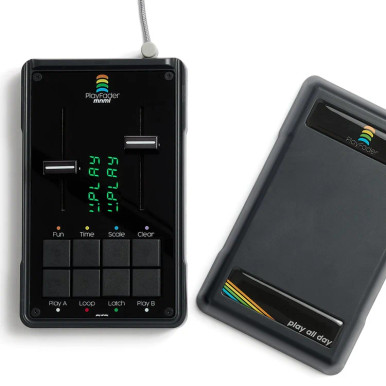
£299.00
We say... Flexible and performer-friendly box of fun that offers a fresh approach to sequencing! Manufacturer's description PlayFader ‘mnml’ Cr24 edition, featuring a black recycled...… read more
Play All Day PlayFader Portable Sequencer (Yellow)
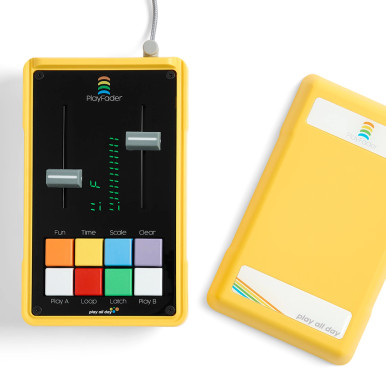
£299.00
We say... Flexible and performer-friendly box of fun that offers a fresh approach to sequencing! Manufacturer's description PlayFader is a colourful 2 channel CV &...… read more
